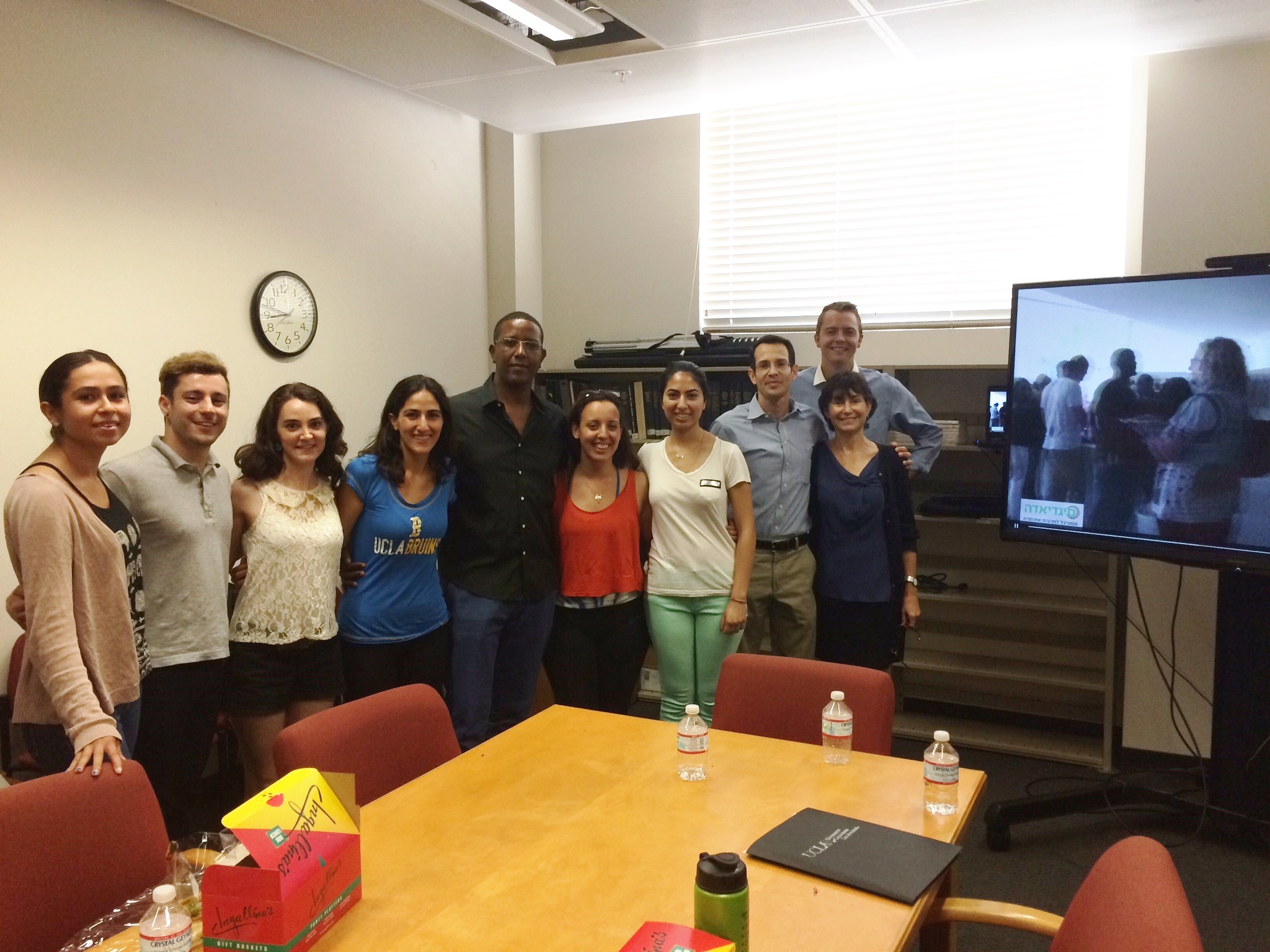Picture this: it’s 1984, you are eight years old, and you have just taken a year-long journey to a new country. Everything in this land is different. You cannot speak the language, you do not understand the culture, you are as afraid of the children as they are of you, and you miss the dog you left behind.This was the position of Shai Fredo, an Ethiopian Israeli actor and social activist, when he first arrived in Israel.
This past Thursday, UCLA students had the opportunity to hear Fredo’s story via an event sponsored by the Younes and Soraya Nazarian Center for Israel Studies. Fredo shared the story of his journey from the traditional Jewish Ethiopian village of Matcha to Israel, and explained how his upbringing influenced his future as a performer and an active member of Israeli society.
Fredo welcomed the crowd with a loud and proud “Shalom!” and went on to describe his past. He was born and raised in Matcha, a village with a population of approximately 400 Jews, where Judaism was the foundation for practically every aspect of life. In fact, as Fredo explained, “Before I learned my name, I learned the word Jerusalem.” Ethiopian Jews of the area spent nearly 2,500 years praying to reach Jerusalem, and many attempted to make the trek to Israel out of religious conviction. However, many of these travelers died along the way or had to return to their villages.
In 1983, with the support of the then 35-year-old State of Israel, the Jews of Matcha, including Fredo’s family, walked for an entire month from their village to the Sudanese border. From there, they prayed to be transported to their ancestral homeland. Although they experienced instances of theft and harassment along the way, their connection to Judaism and Israel remained strong, and they even refused to travel during Shabbat. Once they arrived in Sudan, Fredo and his family remained in a refugee camp for about 11 months, living among millions of Ethiopians refugees of Christian and Muslim faith.
During this time, Jewish refugees hid their identities in fear of what might happen should their neighbors know of their religion and be hostile towards them. This was also a time when nearly 4,000 of the 12,000 Ethiopian Jewish refugees perished, including Fredo’s paternal grandfather. At the end of 11 months, Fredo and his family were rescued covertly by the Israeli Defense Forces (IDF), who flew the remaining 8,000 Ethiopian Jews to Israel in the dark of night. This mission was later famously known as Operation Moses.
After a few years of getting accustomed to the land, Fredo studied in a Hebrew yeshiva for two years, and began writing stories about his dreams and past as a teenager. It was during this time that Fredo developed an aspiration to become an actor and writer. Upon finishing high school and his mandatory three-year military service in the IDF, he enrolled in the well-respected Nissan Nativ Acting School, where he worked 15 hours a day to perfect his skills in acting. Later on, he starred in several shows and programs, some of which he wrote on his own. The Lion of Judah, for instance, is a one-man show chronicling his life.
Despite his success in gaining admission to one of Israel’s most famous acting studios, Fredo often had trouble landing roles due to the racial bias prevalent in Israel. Although encouraged to wait for society to organically develop tolerance, he attempted to change the system on his own. Nineteen years ago, after almost eight years of work, Fredo opened the first Ethiopian acting group to give Ethiopian actors opportunities to practice their art and to be integrated into Israel’s mainstream visual arts scene.
In addition to opening an acting group, Fredo also developed “Sigdiada,” an annual exhibition that celebrates Ethiopian culture — its unique fashion, music, dance, and arts — in Tel Aviv’s renowned Habima Theater. In a video he showed of prior festivals, models strutted in traditional Ethiopian garb as Ethiopian singers performed alongside Chassidic drummers, and dancers moved to the music. In its first three years, the event has boasted about 1,000, 4,500, and 6,500 attendees, respectively. For this year’s event, taking place November 12-14, Fredo anticipates close to ten thousand onlookers.
Fredo also mentioned that anywhere from 20 to 30 percent of the crew is not of Ethiopian descent, and that, “[the crew] must be like that. Mixed.” In encouraging cross-cultural collaboration, he hopes that Israelis of different backgrounds will learn to see one another as members of a single entity, and promote a sense of national unity.
As the discussion came to a close, Fredo taught the room a famous Ethiopian dance move, called iskista. This dance requires an individual to bounce his or her shoulders up and down while swaying from side to side, then adding legs into the dance by continuously moving them up and down. (The difficulty of the dance was tantamount to the difficulty I had while trying to describe the moves in this article.)
Fredo left his audience with a few final words of inspiration: “People all over the world don’t miss the opportunity to hate one another, but to love each other, too….[In this life,] you have the choice to do whatever you want. I choose to build something beautiful and new.”
To learn more about the Younes and Soraya Nazarian Center for Israel Studies, and the events that they host, please visit their website at www.international.ucla.edu/israel/home.

